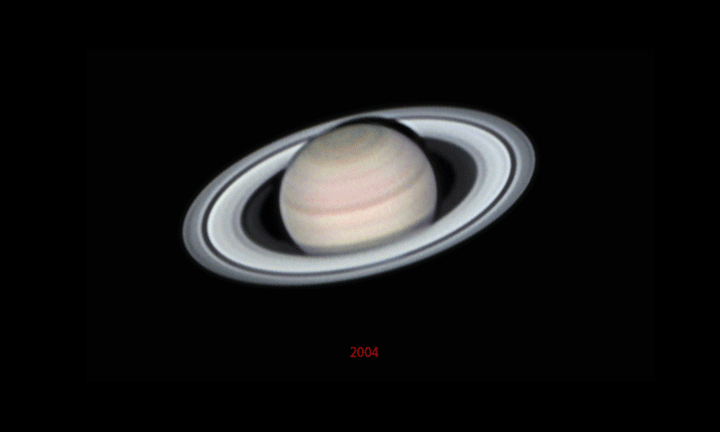On September 4, 2009, Earth’s orbital motion will carry it through the same plane as Saturn’s rings. From our vantage point, the rings will disappear. Usually these ring plane crossings — which only happen about every 15 years — are great opportunities to observe Saturn’s moons. But this year’s ring plane crossing will be practically impossible to see, as Saturn will be very close to the sun, only 11 degrees away. So, disappointingly, we won’t see much. However, amateur astronomer Alan Friedman has given us a glimpse of what this event will look like, without the glare from the sun. Friedman has put together an animation of how the angle of Saturn’s rings have changed over the past six years. See the animation below. “It shows the changing plane of the ring system as viewed from my Buffalo backyard from 2004 to 2009,” said Friedman. “The final frame has been assembled from earlier 2009 observations to display how the planet will appear with its rings edge on.” Gorgeous!

But, Friedman says, our real view of Saturn should get much better and provide a real treat this autumn. “In the fall of 2009, Saturn will emerge from the glare of the sun in the early morning sky and provide Earth-bound astronomers with our first glimpse of its blue north pole in 14 years,” he said.
Enjoy perusing Friedman’s impressive gallery on his website.
And thanks, Alan, for sharing your six-year endeavor with Universe Today!


Oh, I just had an absolutely fantastic tour of Alan Friedman’s website!
What a treasure!
Thanks for sharing all.
best regards
mahesh
Friedman’s very nice “video” shows Saturn’s rings closing from the bottom up. Yet, I have seen sequences showing the rings closing from the top down. Which direction is correct?